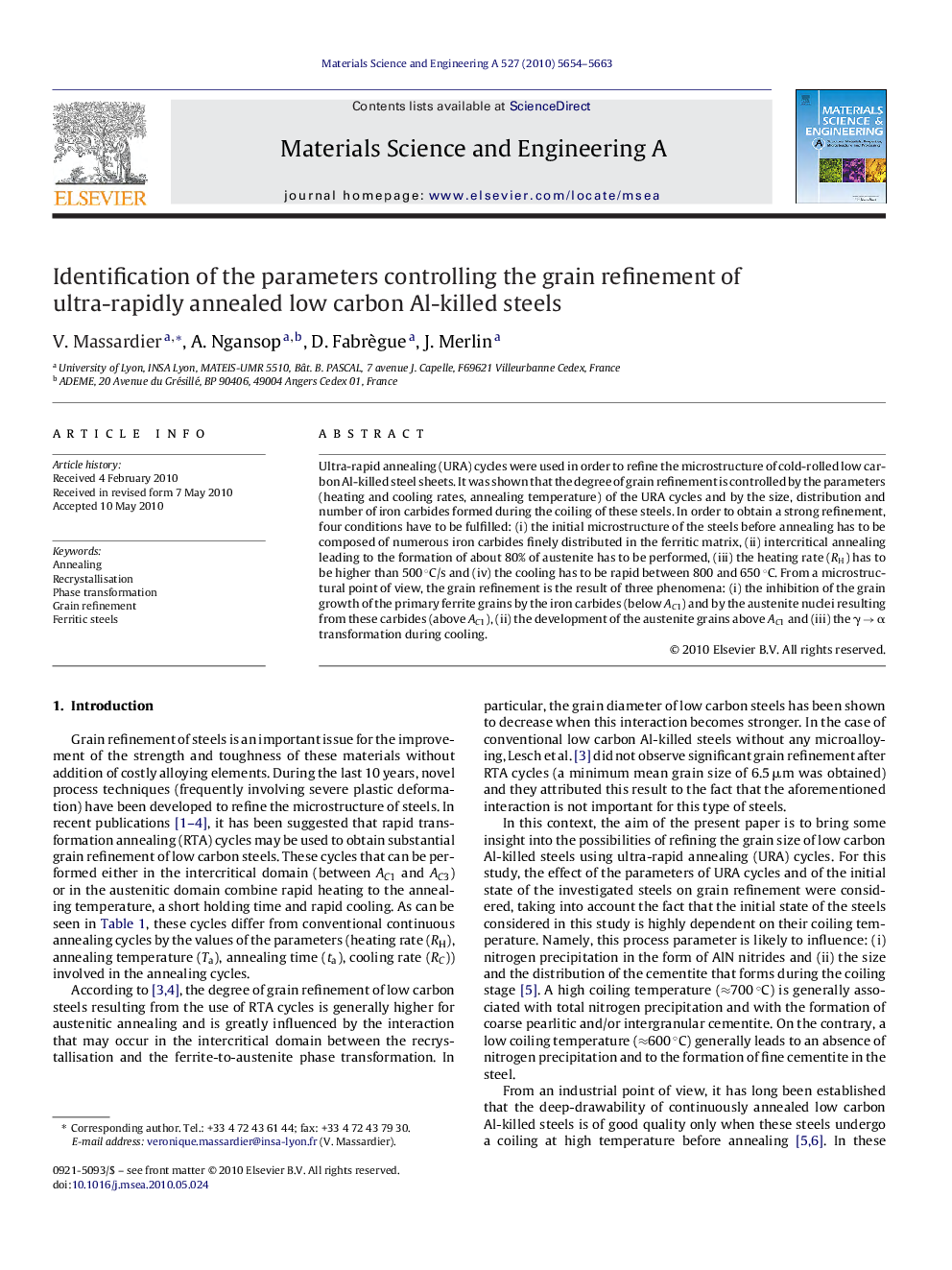| Article ID | Journal | Published Year | Pages | File Type |
|---|---|---|---|---|
| 1579322 | Materials Science and Engineering: A | 2010 | 10 Pages |
Ultra-rapid annealing (URA) cycles were used in order to refine the microstructure of cold-rolled low carbon Al-killed steel sheets. It was shown that the degree of grain refinement is controlled by the parameters (heating and cooling rates, annealing temperature) of the URA cycles and by the size, distribution and number of iron carbides formed during the coiling of these steels. In order to obtain a strong refinement, four conditions have to be fulfilled: (i) the initial microstructure of the steels before annealing has to be composed of numerous iron carbides finely distributed in the ferritic matrix, (ii) intercritical annealing leading to the formation of about 80% of austenite has to be performed, (iii) the heating rate (RH) has to be higher than 500 °C/s and (iv) the cooling has to be rapid between 800 and 650 °C. From a microstructural point of view, the grain refinement is the result of three phenomena: (i) the inhibition of the grain growth of the primary ferrite grains by the iron carbides (below AC1) and by the austenite nuclei resulting from these carbides (above AC1), (ii) the development of the austenite grains above AC1 and (iii) the γ → α transformation during cooling.
